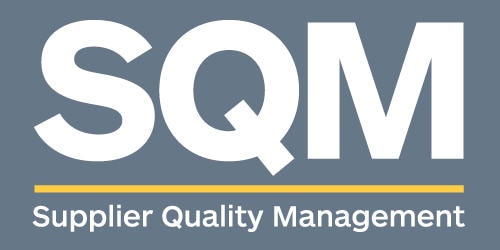Being SMEs on SQMs
You already have a full-time job; keeping up with the regulations of all the regulatory agencies—as changeable as they may be for any given part or project—doesn’t need to be its own full-time endeavor. When your vendor has a good supplier quality management program, you won’t have to bear the burden alone. It’s why we are meticulous with our SQM program.
The list of regulatory bodies we conc ern ourselves with in the metal forming industry is a long one. They include:
ern ourselves with in the metal forming industry is a long one. They include:
- North American Free Trade Agreement (NAFTA)
- Defense Federal Acquisition Regulation (DFARS)
- European Regulation on Registration, Evaluation, Authorisation and Restriction of Chemicals (REACH) Regulation (EC) No 1907/2006
- RoHS Directive (EU) 2017/2102
- Conflict Mineral – Dodd-Frank Act Section 1502
- European Pressure Equipment Directive or “PED” (European Commission Directive no. 97/23/EC)
- California Proposition 65 (the list is updated annually)
- The Slavery & Trafficking Risk Template (STRT)
- Toxic Substances Control Act (TSCA)
Meticulous SQM Process
We have a defined process in place that helps us keep track of it all. Our master file has records of all the regulatory documents for customers, vendors and mills (along with copies of all of their certifications), and important dates for the regulatory bodies. Also, in our master file, we maintain URL links for quick retrieval to all the current regulations. All this information is up-to-date and readily available for reference.
This is just one part of our SQM process, and a vital one that starts at the beginning of our engagement with a customer. When we quote new work, our sales team is required to ask potential (or existing) customers whether or not there are any regulations we need to follow, or if there is an SQM within their organization that we can access. Larson’s team collaborates—quality, engineering, sales, customer service, and purchasing—on each project for every customer we work with.
Real-World Regs
What that looks like in a real-world application might be :
REACH and RoHS: These are European directives, which means if your product is ultimately going to Europe, we have to buy materials smelted by certain mills.
DFARS: For U.S. government work, we need to know which specialty metals can and cannot be used in these instances.
NAFTA: We must certify, for customers that want made-in-USA products, that all our materials and production is done in the USA. Larson has one production facility, which is in the U.S., but we would need to specify only materials from the U.S. to satisfy this regulation. As an example: for automotive work, every single piece of cold-rolled steel is stamped with a code. As well, if we ship a part to Ohio to be painted, and its ultimate destination is to a customer in Ontario, we need to certify the painter is using products within the regulations.
Subject-Matter Experts
We review all of the relevant information, starting with the SQM—cover to cover. This can be a 50-page document at times! We determine if we can meet what customers require, or ask for a deviation for anything we cannot meet. Once we confirm what material we will be using, it is communicated to purchasing to be placed on the P.O. We keep track of everything, and complete SQM audits randomly throughout the year. And while it is very tedious, we want it this way. This robust process ensures that Larson is compliant, helping customers to remain compliant as well. Customers have come to rely on us as subject-matter experts (SMEs), and we take our role as a resource for them seriously. It’s part of what makes us such a dependable supplier.
What all this translates to is that—whether your next project requires progressive die stamping, deep drawing, in-die assembly, or value-added operations—Larson is well-equipped to do the job. Whatever your regulatory requirements are, we’ll be compliant. Find out first-hand, and contact us now to see for yourself.

